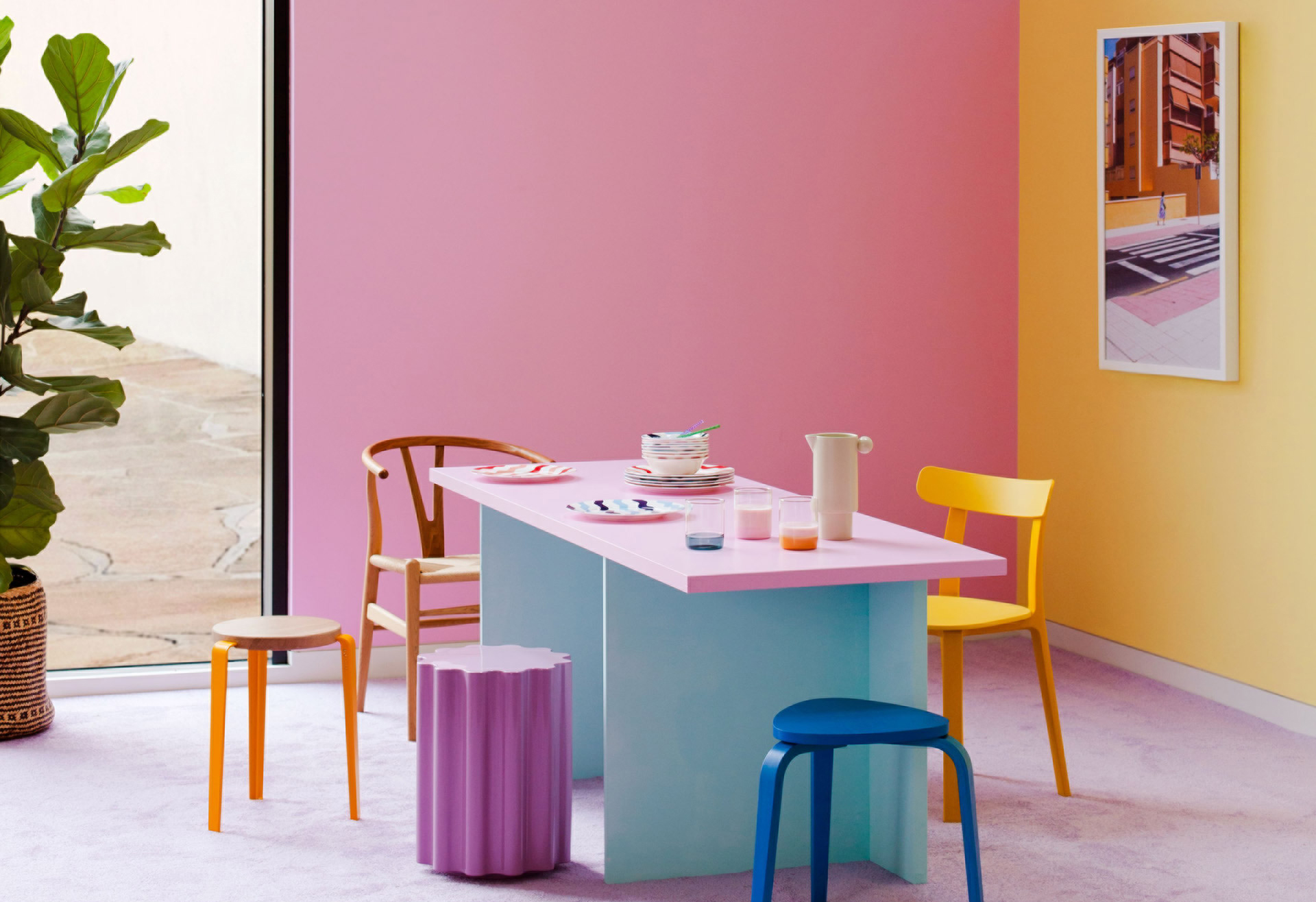
Dopamine decor – can you decorate yourself happy?
There’s a fun, colourful new look that promises to say “goodbye” to boring and make us happy at the same time – dopamine decor.
Intrigued? Here’s what you need to know about the mood-boosting trend…
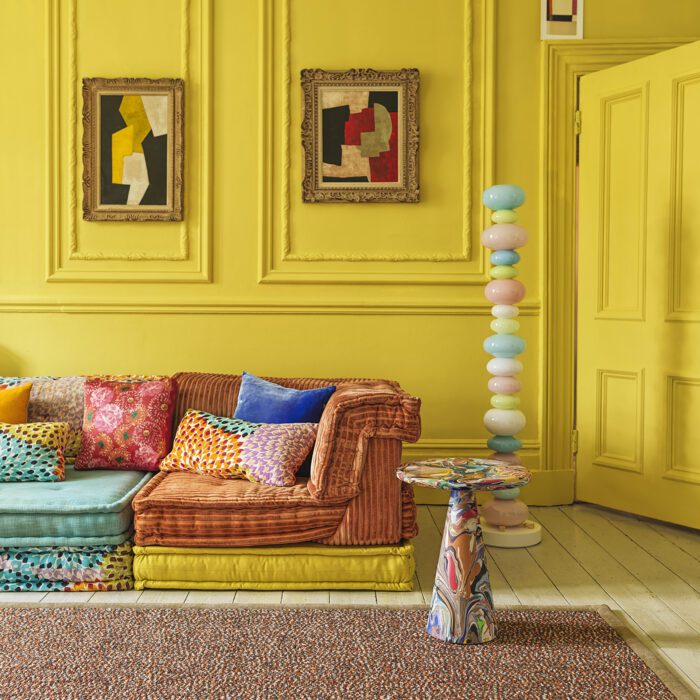
What is dopamine decor? The origins
The dopamine decor trend developed out of the fashion for dopamine dressing.
The latter term was originally coined by fashion psychologist Dawnn Karen. Fascinated by the relationship between our psychology and what we wear, the psychology professor believes we can enhance our mood through our choice of clothing.
The idea caught on, and “dopamine dressing” took off as a way for people to cheer themselves up during the difficult times we have been living through recently. (Pandemic followed by a cost-of-living crisis, anyone?)
From 2022, Instagram and TikTok were full of influencers modelling colourful clothes, playful prints and bright patterns, all chosen to lift their mood and improve their self-confidence, under the #dopaminedressing hashtag.
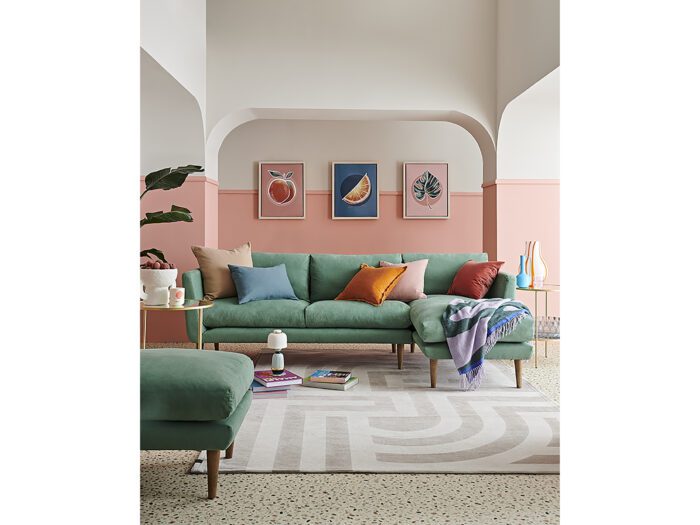
It wasn’t long before interior designers caught on to the trend, and social media was soon full of dopamine decorating too: design to boost mood.
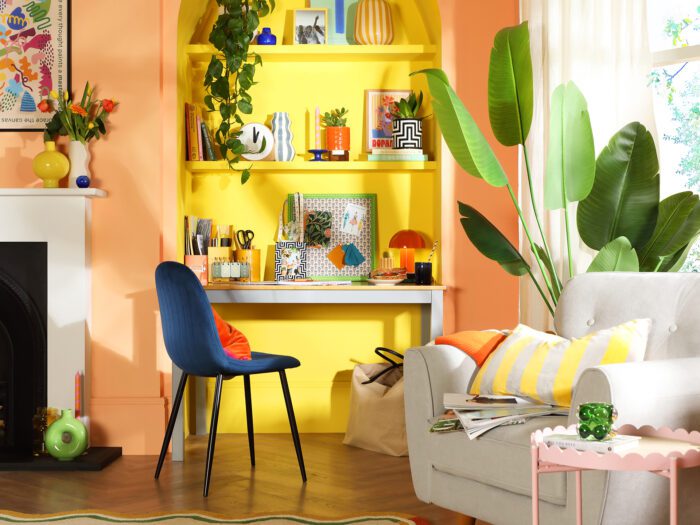
What is dopamine?
Dopamine is a neurotransmitter – a chemical that passes messages between nerve cells – and its role in brain chemistry and pleasure is actually quite complex.
It plays an important part in a whole range of bodily and psychological functions including motivation, motor control, arousal, reinforcement, reward and sexual gratification.
There’s no need to get bogged down in the scientific details here. The basic idea boils down to: dressing and decorating to make us happier.
Dopamine decor is shorthand for something broader, too; something more and more people are trying to do nowadays, which is using science and psychology to inform their choice of home décor, rather than just mindlessly following fashion.
The focus is on decorating for self-expression, positive mood, and wellbeing.
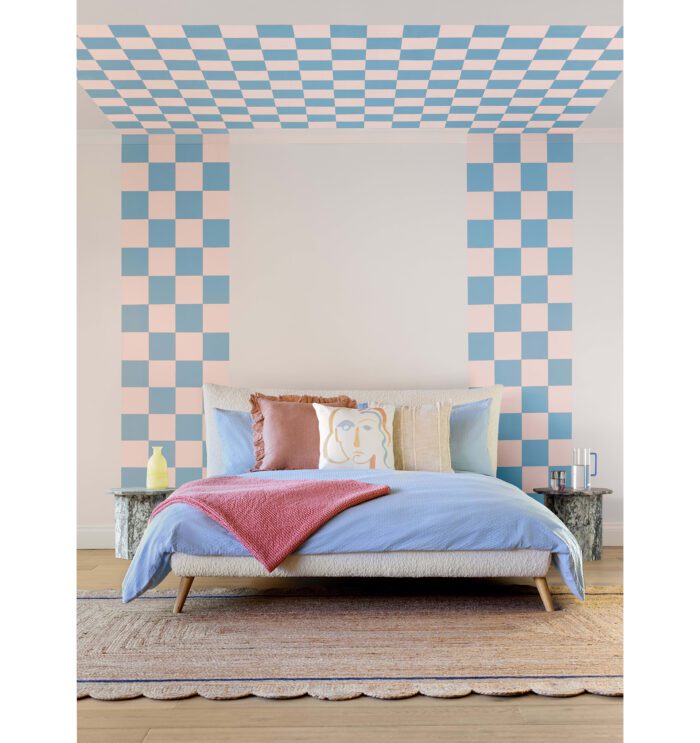
Bright and colourful
In general use, however, the term “dopamine decor” has come to be associated with an eclectic, colourful and fun style characterised by:
- bright colours
- bold prints
- whimsical accessories.
As Camilla Lesser, of Essential Living, says, “It’s about filling your space with colours, textures, and objects that make you feel good.
“Think: bright pinks, deep blues, citrusy yellows – anything that energises you, and feels vibrant and exciting.
“It’s a celebration of self-expression, and the understanding that our environment can have a significant impact on our mood.”
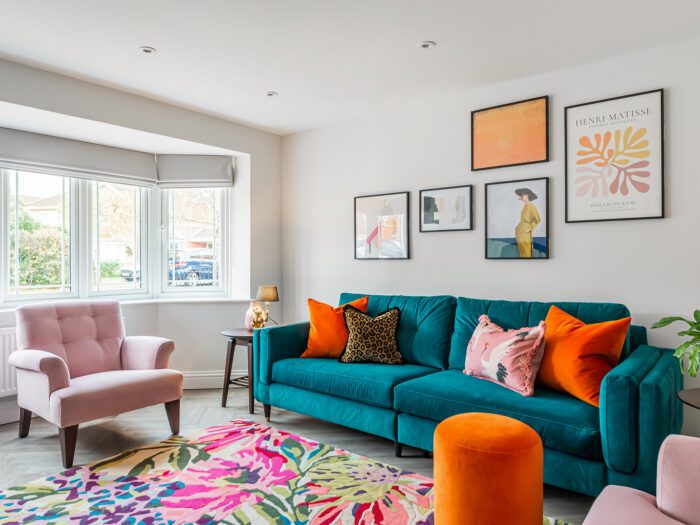
Gareth Coxall, Creative Director at Terrys, adds, “Dopamine décor is all about transforming your space into your very own happiness retreat. Think: bright colours, bold prints, gallery walls, and quirky accessories.”
The psychology of colour
Bright colours are a key part of the look. In recent decades, scientific research has explored the effects colour can have on us, and the new field of colour psychology is beginning to understand the specific emotional and physiological effects of being exposed to different colours.
Some of these effects are culturally determined, for example, red is associated with danger in some cultures and good luck in others.
Other effects of colour seems to be more universal, Ali Edwards, from MADE, says, “Adding certain colours (and patterns) into the home like bright yellows, oranges and pinks, can leave you feeling more energised, whilst blues are said to help you feel calmer and more productive.”

Dopamine decor: how to use colour
It can be a little daunting knowing where to start with bright colours. Committing to anything other than a safe neutral shade can feel scary.
Celebrated designer Matthew Williamson, famous for his mastery of colour and pattern, says, “The first step when choosing a colour for a particular room is always to think about how you want to feel in that space.
“Do you want to feel calm and relaxed? Then choose cool tones, from blue to green, and then work with a few additional shades similar to this colour base to dress the room with larger items. This creates a stylish, harmonious feel.
“Feeling brave? Throw in some fuchsia pink velvet cushions, or paint a picture frame neon orange to inject some personality. Then, if you love the result, go bigger.
“Colour may seem daunting initially, but if you take small steps and build on the layers of warm and cool tones, you will always feel comfortable.”
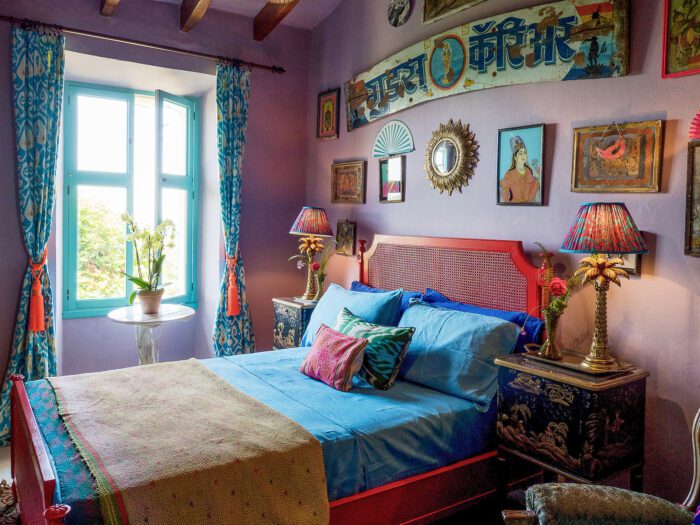
Melissa Denham, of Hammonds Fitted Furniture, recommends, “Drench your walls in different shades of your favourite colour.
“Think greens or reds in different hues, or alternating shades of blue or orange. Remember to focus on the purpose of the room. Rooms such as bedrooms or living rooms should still have a peaceful atmosphere while evoking joy.”
Sam Greig, at Swoon suggests, “A great starting point is to explore complementary colours – those opposite each other on the colour wheel.
“These combinations, like pink and green, blue and orange, or purple and yellow, create a bold yet harmonious look.
“The result is a striking space that not only embodies the principles of dopamine décor, but also feels both daring and stylish.”
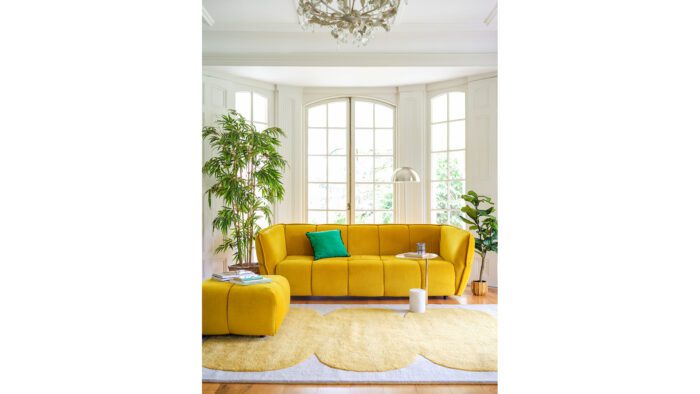
Grazzie, at Ca’ Pietra, says, “According to colour psychology, green is linked to wellbeing, so it brings a relaxed energy to the home.
“It demands very little, so fits into homes easily. Blue in its palest form helps calm us, while more intense blues aid concentration.
“Pink also performs differently depending on the shade; paler pinks are soft and nurturing, so work wonders in main bathrooms and bedrooms, while stronger blush shades can be really grounding.”
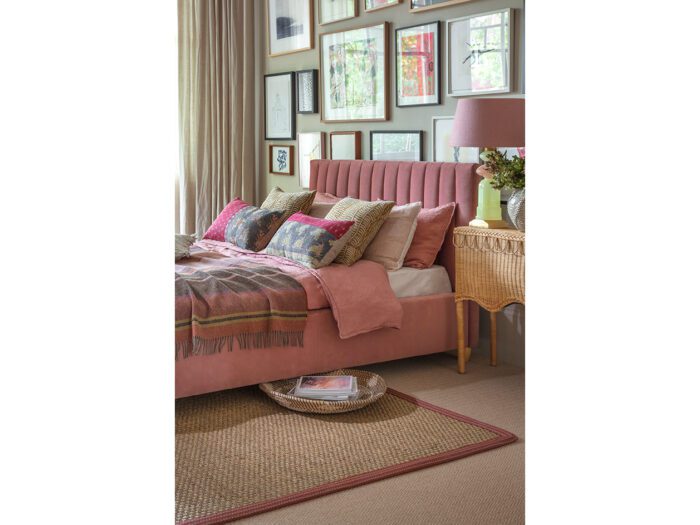
Maximalism
The turn to colour and pattern is also part of a wider move towards maximalism: born of a desire for change after decades when “good taste” has been defined by greige minimalism.
Shelley Cochrane, from Furniture Village, suggests, “Dopamine décor arose as an antidote to magnolia and minimalism, as consumers began to opt for characterful homes that reflect their personal style and taste.
“It’s all about decorating in a way that makes you feel joyful, and this will mean different things to different people. Some will choose neon bright hues, whilst others will lean towards a mix of patterns, from floral to geometric.
“It’s a decorating method, rather than a passing fad or trend, but, as a general rule, it will usually involve vivid colours, clashing patterns and a style that feels eclectic and maximalist.
“The good news is that because it’s all about designing your home in a way that you truly love, it will never fall out of style.”

How to make dopamine decor work in every room
And it’s a trend that can work in any room. Molly Woodward-Moor, of Stone Superstore, says, “Kitchen splashbacks can be an excellent canvas for expressing this trend – imagine a splashback adorned with soft pastels like lavender, apricot, butter yellow, or plaster pinks.
These cheery, soothing colours, particularly in a dusty, matte finish, can transform the space into a haven of unfiltered optimism.”
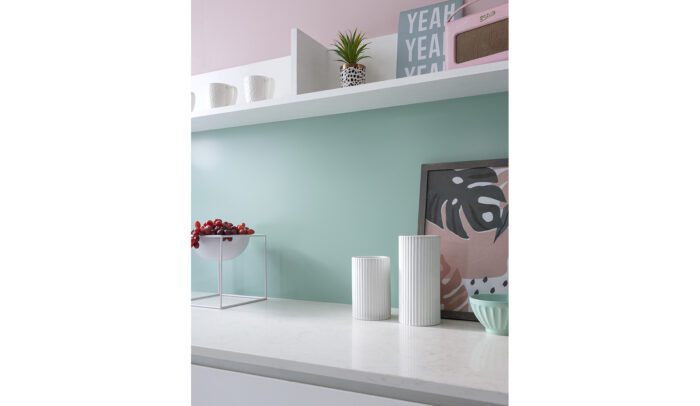
She continues, “Unused fireplaces, too, can become a focal point with tiles that trigger a spark of joy, embracing the trend’s celebration of vibrant and mood-enhancing aesthetic.
For those considering bringing the trend to their home, the bathroom can also be a great space to start, as these tend to be smaller, more contained spaces where bolder design decisions may not appear quite as daunting.”
Ashley Cooper, from Triton Showers points out, “Bathrooms are no longer confined to clinical white tiles, instead you’ll see designs that boast confidence and are decorated in vibrant tones. Primary colours are back, and here to brighten your day.”
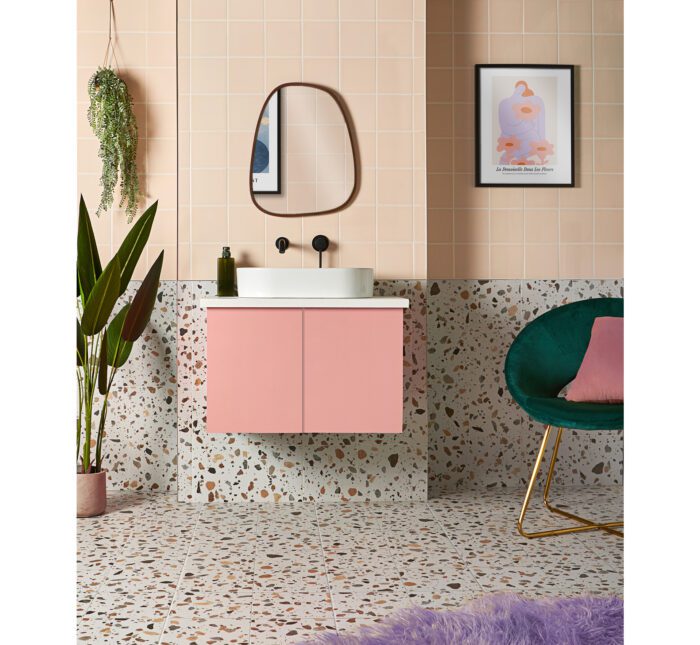
Louisa Swannell, at Walls and Floors, agrees, “Choose tiles in bold colours like sunny yellow, electric blue, coral, or emerald green, then use these hues for a statement wall or scatter them throughout the space to create visual energy.
You could play with colour blocking by choosing two or more bold tile colours and applying them in sections, or combine tiles of different patterns and shapes, such as mixing a playful terrazzo with colourful subway tiles, to create an eclectic, layered look. The key is to choose styles that are bold, unexpected, and complement each other without matching perfectly”
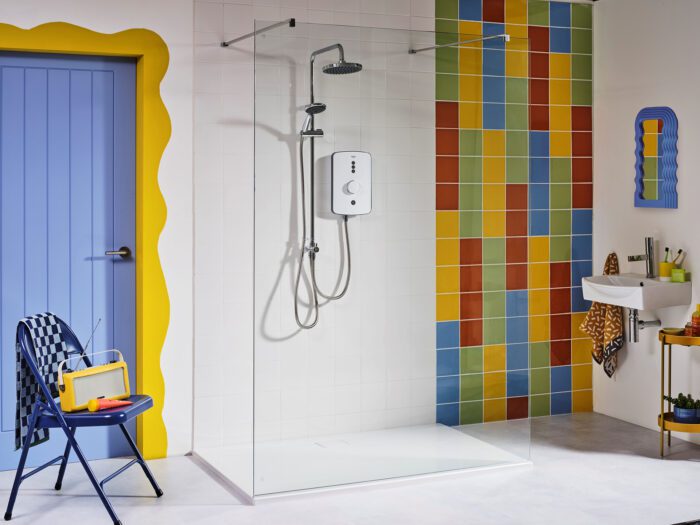
Get the look on a budget
Ali Edwards from MADE has some ideas for embracing the trend on a budget. “To introduce pops of colour without replacing your furniture, opt for brighter paint colours on unexpected surfaces in your home, such as skirting boards, doors or ceilings.
“This grants you the creative freedom to refresh the decor whenever inspiration strikes. Or fully embrace the trend by experimenting with dual-toned walls, or playful shapes like archways or bold circles.
“Unconventional painted shapes are an increasingly popular interior trend, offering a creative and budget-friendly way to bring your space to life.”

To pull the look together, Sam Greig advises, “Give your living space a focal point so that it doesn’t feel too chaotic with all your chosen colours, patterns and textures.
“A feature wall with dynamic wallpaper or a large piece of art hanging on it can work well. You can also turn to furniture to anchor the eye.
“Think of a dramatic bed frame or a stylish wooden chest of drawers set against a wall adorned with accessories or plants.”
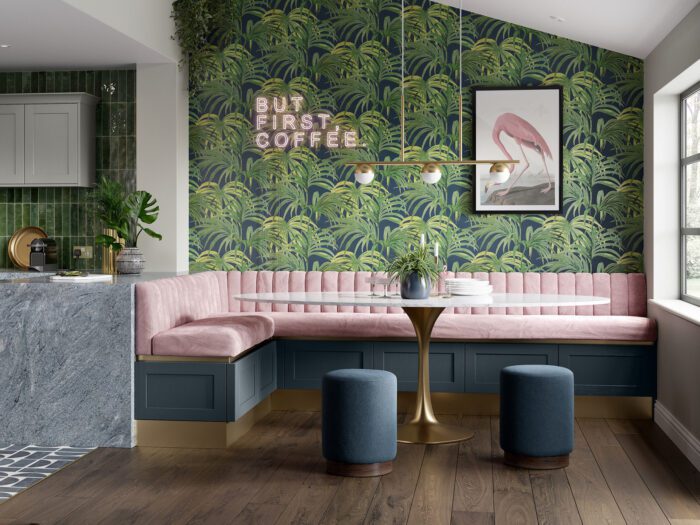
Flora Hogg, from Craig & Rose says, “If tackling an entire room feels overwhelming, try starting small with something like a cupboard off the hall. A colour like our Lamplighter, a vibrant sunny yellow, can be a perfect choice.
“Every time you open the door, you’ll be greeted with a cheerful burst of colour, brightening even the dullest of days. Start small by incorporating items and colours that genuinely make you happy, and be intentional with design choices.”
Accessories are key
Fun and whimsical accessories are an important part of the look, and they are another great way to experiment without committing yourself too heavily.
Ali Edwards says, “If you don’t want to go all-out, an easy way to create a home that brings you joy is through smaller pops of colours. Table lamps, rugs or decorative accessories can be easily switched up and moved to different rooms – and they won’t break the bank.”
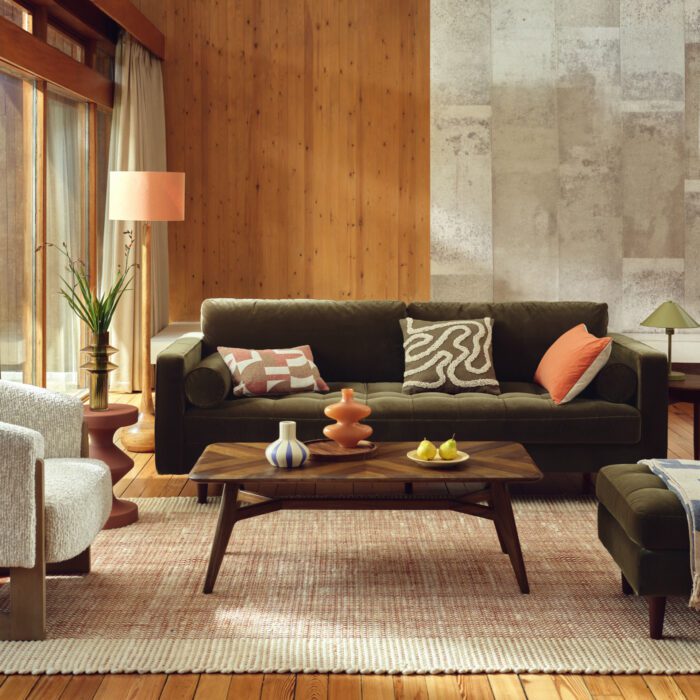
Sustainability
There are many ways to embrace the trend without being wasteful, too, including:
- upcycling furniture with colourful paint
- hunting eclectic ornaments from all eras in charity shops
- opting for accessories made from recycled materials.
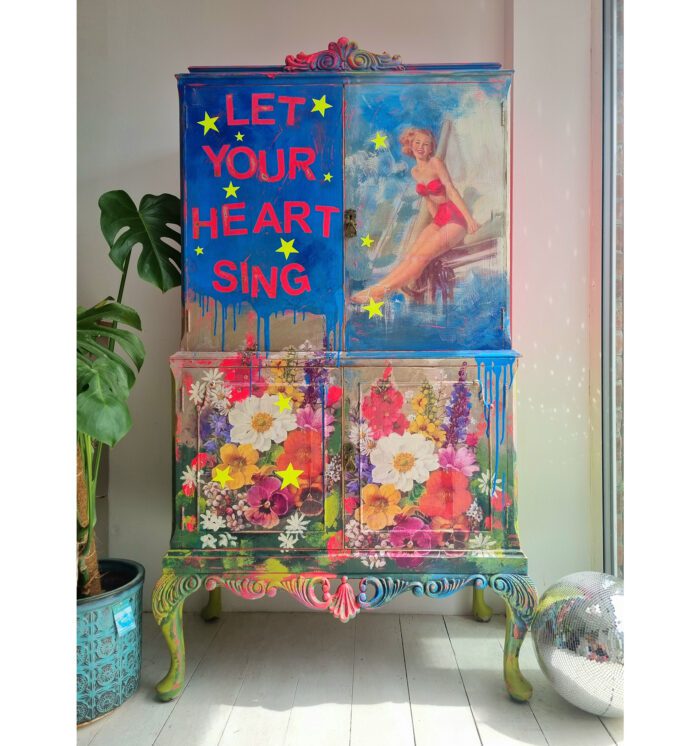
A look that will last
But how do you ensure a bold look like this has longevity? The team at Omexco say, “To ensure dopamine décor is more than just a passing fad, balance playfulness with sophistication.
“Mixing playful, dopamine-boosting elements with more neutral or elegant items can create a space that feels both exciting and mature, preventing the room from looking overly trendy or chaotic.”
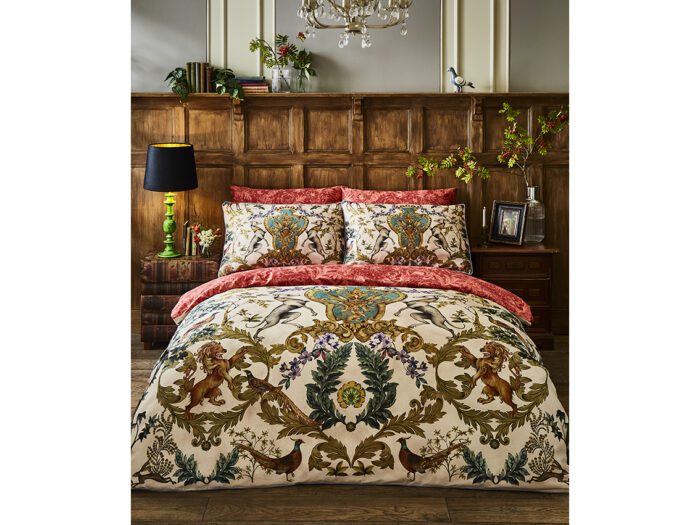
Yvonne Keal, from Hillarys, puts it this way, “To keep the look feeling fresh and not just trendy, focus on mixing in pieces that really resonate with you – think about what colours or styles make you smile, and blend those with more classic elements.”
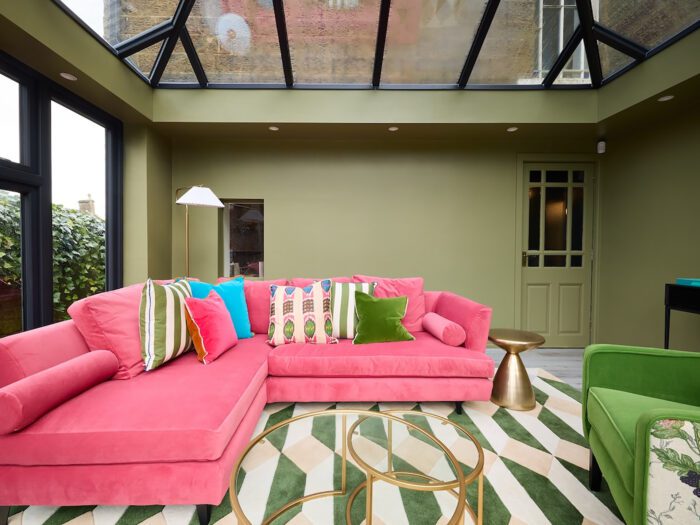
She continues, “That said, design is super personal. While some people thrive in lively, vibrant spaces, others find peace in soft, neutral tones.
“For them, the idea of dopamine colour can actually feel a bit stressful. At the end of the day, the best design is one that makes you feel good, whether that’s through bold choices or calming simplicity. Your space should be a reflection of who you are and what makes you happy.”
It’s personal
That is an important point. Even if you find it all a bit too bright and zany, there are things to learn from the trend.
Dopamine décor is all about is designing a space that makes those living in it happy. And that is a lesson we should all take to heart.
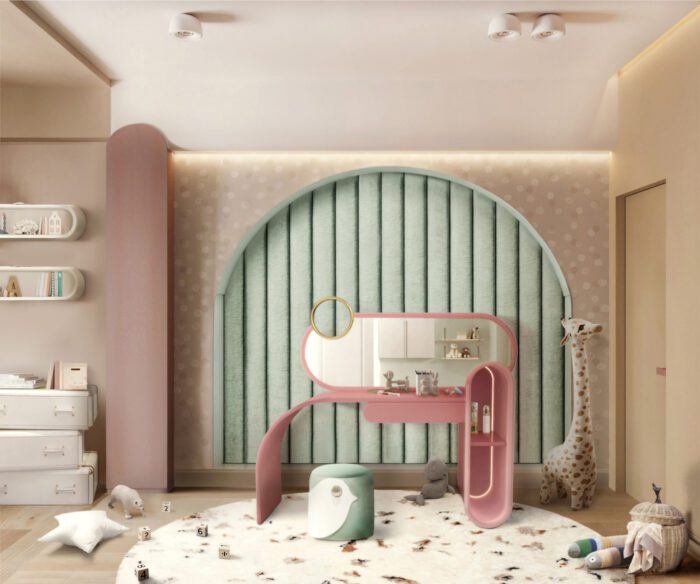
Design for wellbeing
Living in a space full of furnishings, art, and colours you love has to be conducive to wellbeing – and there are other ways we can use design to increase wellbeing too, such as:
- decluttering, which can help us stay focussed when working from home, and relax at other times
- ergonomics, which means thinking about how well our furniture, spaces and appliances function, not just how they look
- using personal mementoes and treasures to give a sense of belonging and security
- acknowledging our need to connect with nature by having plants in the home
- using light therapy to avoid seasonal affective disorder (SAD).
There are some great books you can use to inform your design decisions. A couple of good ones to start with are Happy Inside by Michelle Ogundehin and Wellbeing in Interiors by Elina Grigoriou.
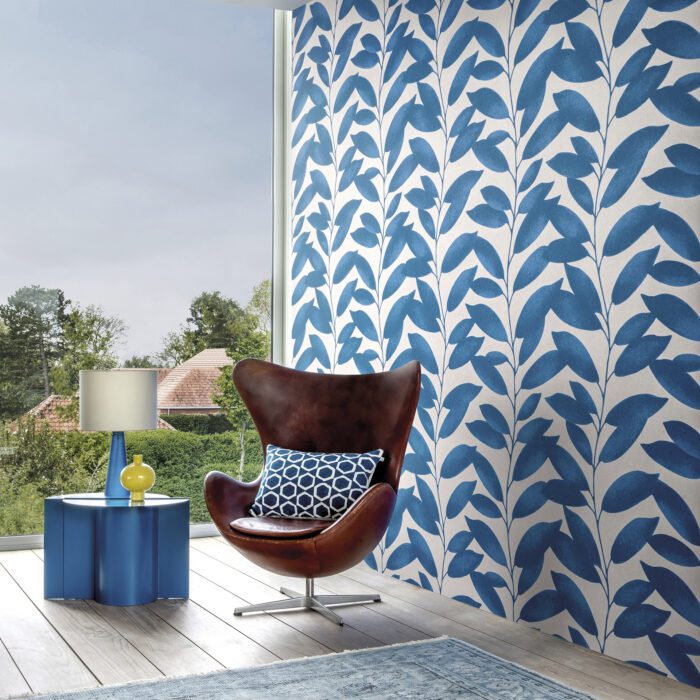
Design yourself happy?
So can you really “design yourself happy”? Let’s give the last word to Holly Ambrose, from Roomes Furniture and Interiors, who says, “I believe you can design yourself happy. There’s a lot of science behind colour therapy, and the colours we choose can set the tone for a room’s ambiance.
“Surrounding yourself with colours and designs that promote productivity, creativity and energy can positively impact your daily life. This is especially important if you’re working from home.
“A bright, energising space will help you stay focused and motivated, whereas a dark and cold room can have the opposite effect.
“By thoughtfully curating your environment, you can feel more uplifted and productive every day.” And it’s hard to argue with that.
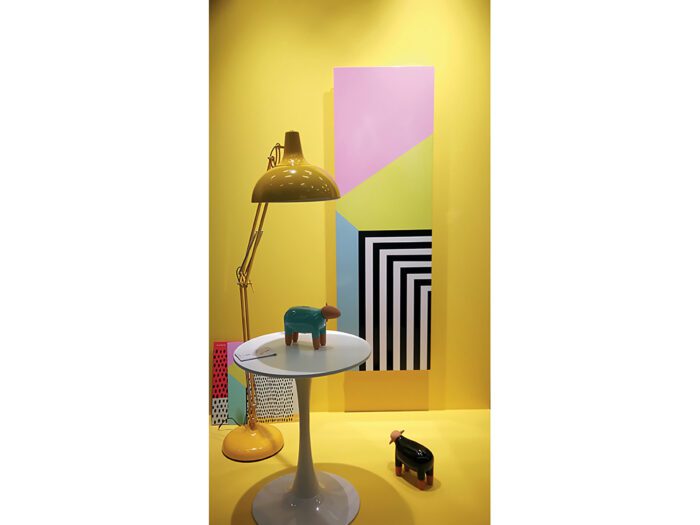
READ MORE
- Learn more about using psychology to improve the design of your kitchen.




